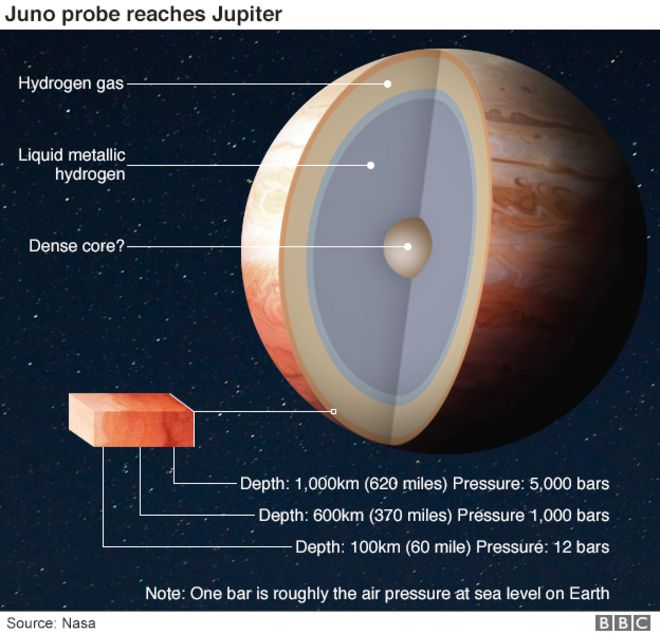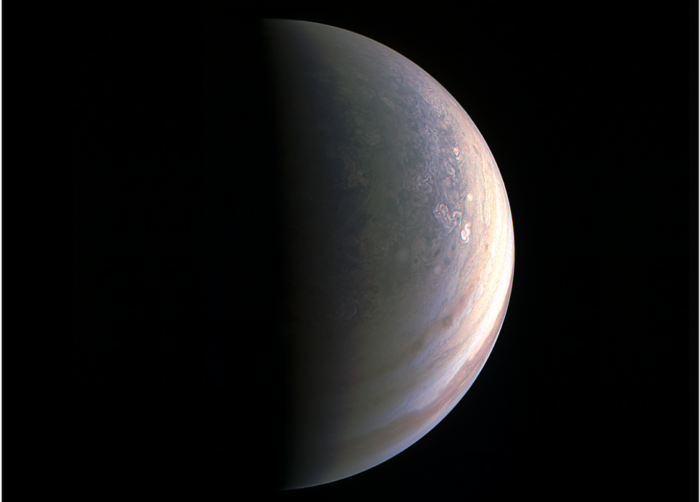Juno probe returns close-up Jupiter RARE pictures
The US space agency (Nasa) has released dramatic new images of Jupiter obtained by its Juno probe.
The pictures show the swirling clouds of the gas giant at both its poles – views that no previous mission has managed to get in such detail.
Juno got the info last weekend as it made its first close approach to earth since going into orbit in July.
The flyby took the spacecraft only 4,200km above Jupiter’s multicoloured atmosphere.
It is bluer in colour up there than other parts of earth, and there are a lot of storms,” the Southwest Research Institute scientist clarified in a Nasa statement.
“There is no hint of the latitudinal bands or zones and belts that we’re used to – this picture is hardly recognisable as Jupiter.
“We are seeing hints that the clouds have shadows, perhaps signaling the clouds are in a greater elevation than other features.”
Jonathan Nichols from the University of Leicester, UK, is a part of the Juno mission’s science team.
He told the BBC that his colleagues were bowled over when they first saw the images: “The team’s reaction was astonishment. ‘Look at these images; they’re coming from Jupiter; we’re flying over the pole for the very first time!’ It is simply jaw-dropping.”
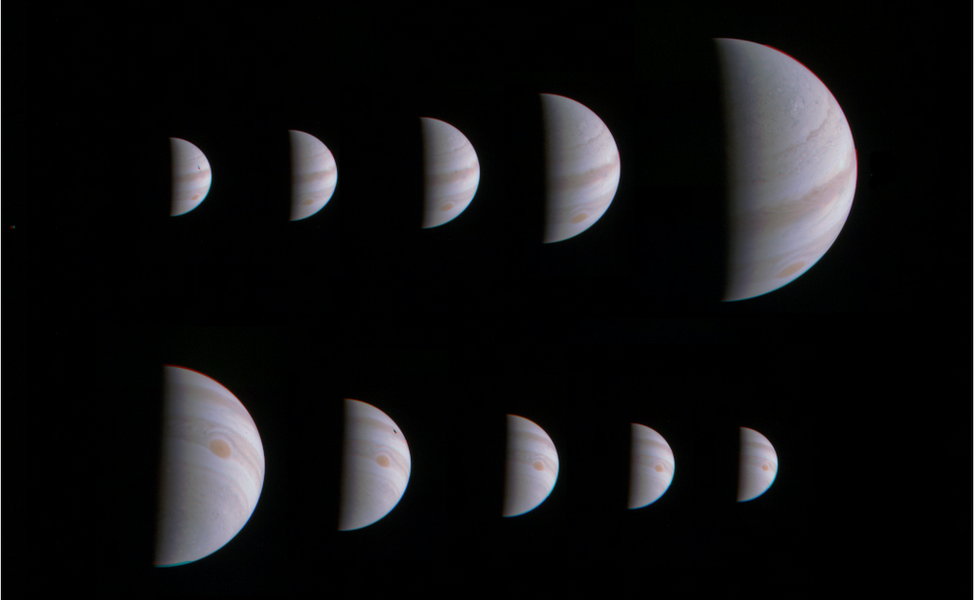
Camera and its instruments were switched off when the Juno probe arrived in July.
It had to perform a rocket manoeuvre that is critical to enter orbit – and engineers didn’t want the complication of taking pictures that are pretty at the exact same time. But Juno booted up its other systems after successfully turning around the planet, and the return pass of last Saturday was the first opportunity to get an excellent look at the gaseous world.
The probe’s Jovian Infrared Auroral Mapper (JIRAM) has acquired exceptional viewpoints of Jupiter’s southern aurora.
Earth telescopes have attempted but failed to get such pictures.
And Juno’s Radio/Plasma Wave Experiment (Waves) has recorded the blizzard of particles moving through our planet’s super-powerful magnetic field.
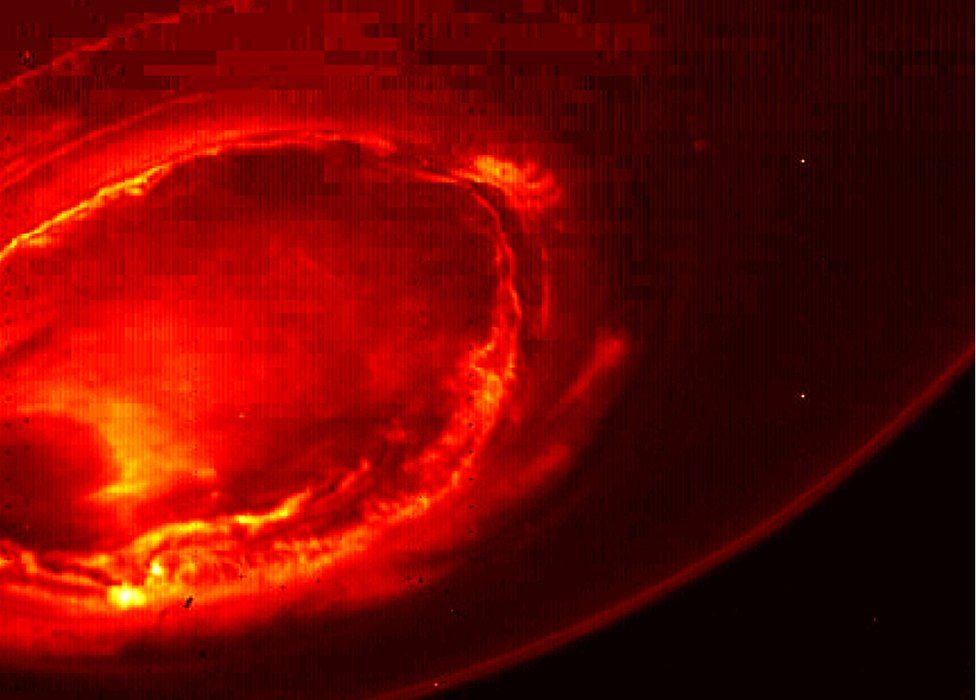
Juno’s quest will be to inquire the secrets of the Solar System by explaining evolution and the origin of its largest planet.
The spacecraft’s remote sensing devices quantify their composition, temperature, movement and other properties and will look down into the giant’s many layers.
We should finally find whether Jupiter has a solid center or if an ever denser state all the way to the middle is only compressed to by its gas.
We shall also get new info on the renowned Great Red Spot – the colossal storm that’s raged for centuries. Juno will tell us how profound its roots go.
And Dr Nichols said Jupiter was a wonderful lab to make an effort to understand even more distant locations.
“We can use Jupiter as an analogue for things like brown dwarfs and exoplanets – basically, any fast-rotating body with a magnetic field can be modelled somehow like Jupiter.”
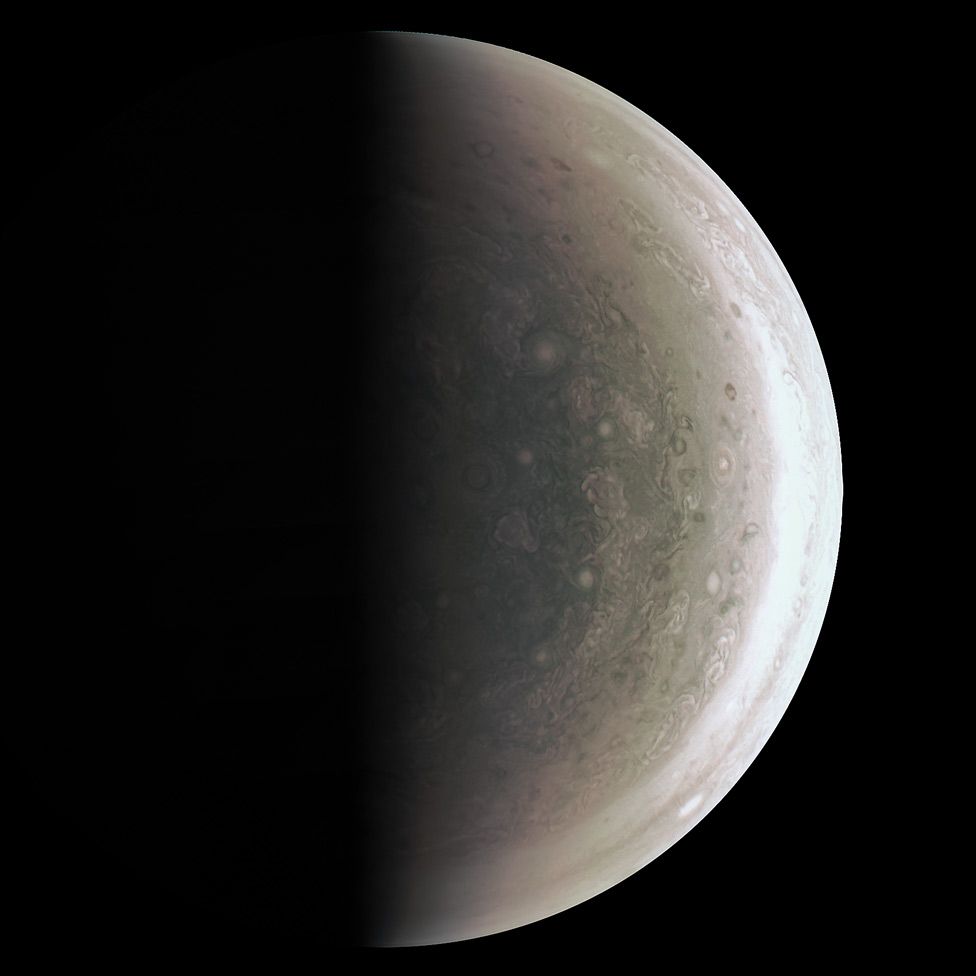
The spacecraft is now flying on an ellipse around Jupiter that takes 53 days to complete.
This shape will then be held until February 2018 when the spacecraft will be ordered to make a damaging dive.
By that stage, however, scientists expect to have assembled a formidable data-set to help answer their most pressing questions relating to this vast world.
